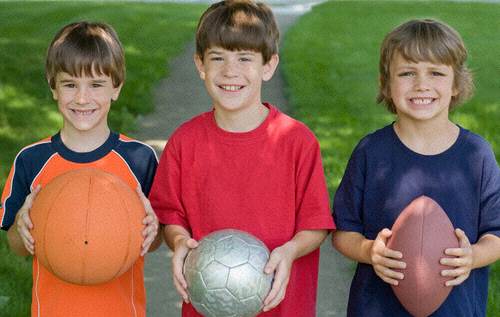 As a parent and a Physical Therapist working with Sports Medicine for the last 16 years, I have had the opportunity to develop some strong opinions related to youth and exercise. In today’s society, we seem to be battling inactivity in our children. We worry about them sitting in front of the television, playing video games, and not showing interest in outside activity. Child obesity has become a major health. For those of us fortunate enough to have children who are interested in sport and exercise, we worry about the epidemic of knee and shoulder injuries that are ruining our future Olympians careers. OK, so I’m a proud parent of 4 and 7 year old girls. It is never too early to start planning. Or is it?
As a parent and a Physical Therapist working with Sports Medicine for the last 16 years, I have had the opportunity to develop some strong opinions related to youth and exercise. In today’s society, we seem to be battling inactivity in our children. We worry about them sitting in front of the television, playing video games, and not showing interest in outside activity. Child obesity has become a major health. For those of us fortunate enough to have children who are interested in sport and exercise, we worry about the epidemic of knee and shoulder injuries that are ruining our future Olympians careers. OK, so I’m a proud parent of 4 and 7 year old girls. It is never too early to start planning. Or is it?
Not only is it not to early, but here is some information for all of us. I believe that we start preparing our children for exercise from the time they are roughly 6 months old. Ridiculous, you say. What about core stability? Infants begin integrating their reflexes and using their core muscles to sit up between 4 and 6 months old. As a parent you can facilitate early core strength simply by encouraging your child to actively use their body to explore the environment around them.
So, what does this have to do with exercise as they get older? As we have written in previous articles, the muscles of the core, abdominals and gluteals, set up the position of the pelvis and affect the efficiency and overall strength of the hip and lower extremity muscles. This efficiency leads to less strain, and better force production/reduction. The end result is a more efficient athlete with fewer injuries. Usually, this leads to a life long athlete and exercise participant.
So, how do we encourage our children and instill a joy of exercise without training them like we are coaching a future Olympian? Simple, we follow a very old and well-established principle of learning, variability of practice. Expose children from a very young age to a variety of activities in a variety of places. Just create a safe environment were they can trip, fall, roll around and get up again without being harmed. Yes, that includes when they are infants. Let your child run, jump, hop, skip, bounce, and roll. Let them learning to pedal, balance, and walk on a beam. These are all activities that can start by the time they are 2 years old. When your child is about 5 years old and can follow directions, get them involved in organized activity that is not too competitive. Let them experiment with many activities and watch them gain self-confidence. Just remember to make it fun. Go on family hikes or walks and mix in skipping and running. Children love to laugh. If you can make them laugh and do exercise, you are well on your way to creating a love for the activity.
What about swimming and running? Once a child can follow instruction, involvement in organized exercise is fine. The goal is to build a love for activity and lifelong skills. Let your child choose the activity, this will help them gain self-esteem. From a Physical Therapist’s perspective, varied experience leads to better retention of skills. This leads to more efficient muscle use, better balance, easier skill acquisition, and less injuries. Overall that means more fun, better self-esteem and a lifelong love of being active.
As a final perspective, let me say that the most effective way to get children interested and engaged in activity is to let them model yours and other adult’s positive behaviors. This is really what children want to do. Now, lets get out and train our future Olympians.

